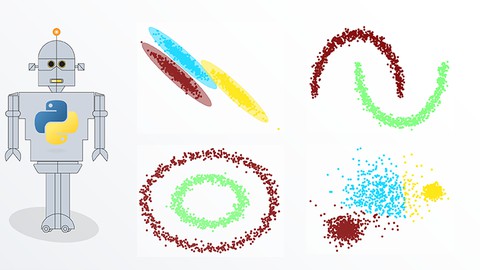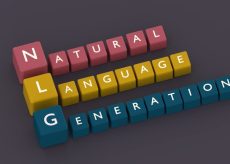Unsupervised Machine Learning with Python


Price: 69.99$
Course Outcome: After taking this course, students will be able to understand and implement in Python algorithms of Unsupervised Machine Learning and apply them to real-world datasets. Course Topics and Approach: Unsupervised Machine Learning involves finding patterns in datasets. The core of this course involves study of the following algorithms: Clustering: Hierarchical, DBSCAN, K Means & Gaussian Mixture Model Dimension Reduction: Principal Component Analysis Unlike many other courses, this course: Has a detailed presentation of the the math underlying the above algorithms, including normal distributions, expectation maximization, and singular value decomposition. Has a detailed explanation of how algorithms are converted into Python code with lectures on code design and use of vectorization Has questions (programming and theory) and solutions that allow learners to get practice with the course material The course codes are then used to address case studies involving real-world data to perform dimension reduction/clustering for the Iris Flowers Dataset, MNIST Digits Dataset (images), and BBC Text Dataset (articles). Course Audience: This course is designed for: Scientists, engineers, and programmers and others interested in machine learning/data science No prior experience with machine learning is needed Students should have knowledge of Basic linear algebra (vectors, transpose, matrices, matrix multiplication, inverses, determinants, linear spaces)Basic probability and statistics (mean, covariance matrices, normal distributions)Python 3 programming Students should have a Python installation, such as the Anaconda platform, on their machine with the ability to run programs in the command window and in Jupyter Notebooks Teaching Style and Resources: Course includes many examples with plots and animations used to help students get a better understanding of the material Course has many exercises with solutions (theoretical, Jupyter Notebook, and programming) to allow students to gain additional practice All resources (presentations, supplementary documents, demos, codes, solutions to exercises) are downloadable from the course Github site.2021.08.28 Update: Section 9.5: added Autoencoder example Section 9.6: added this new section with an Autoencoder Demo 2021.11.02 Update: Sections 2.3, 2.4, 3.4, 4.3: updates so codes can run in more recent versions of python and matplotlib and updates to presentations to point out the changes2021.11.02 Update: Added English captions to the course videos






